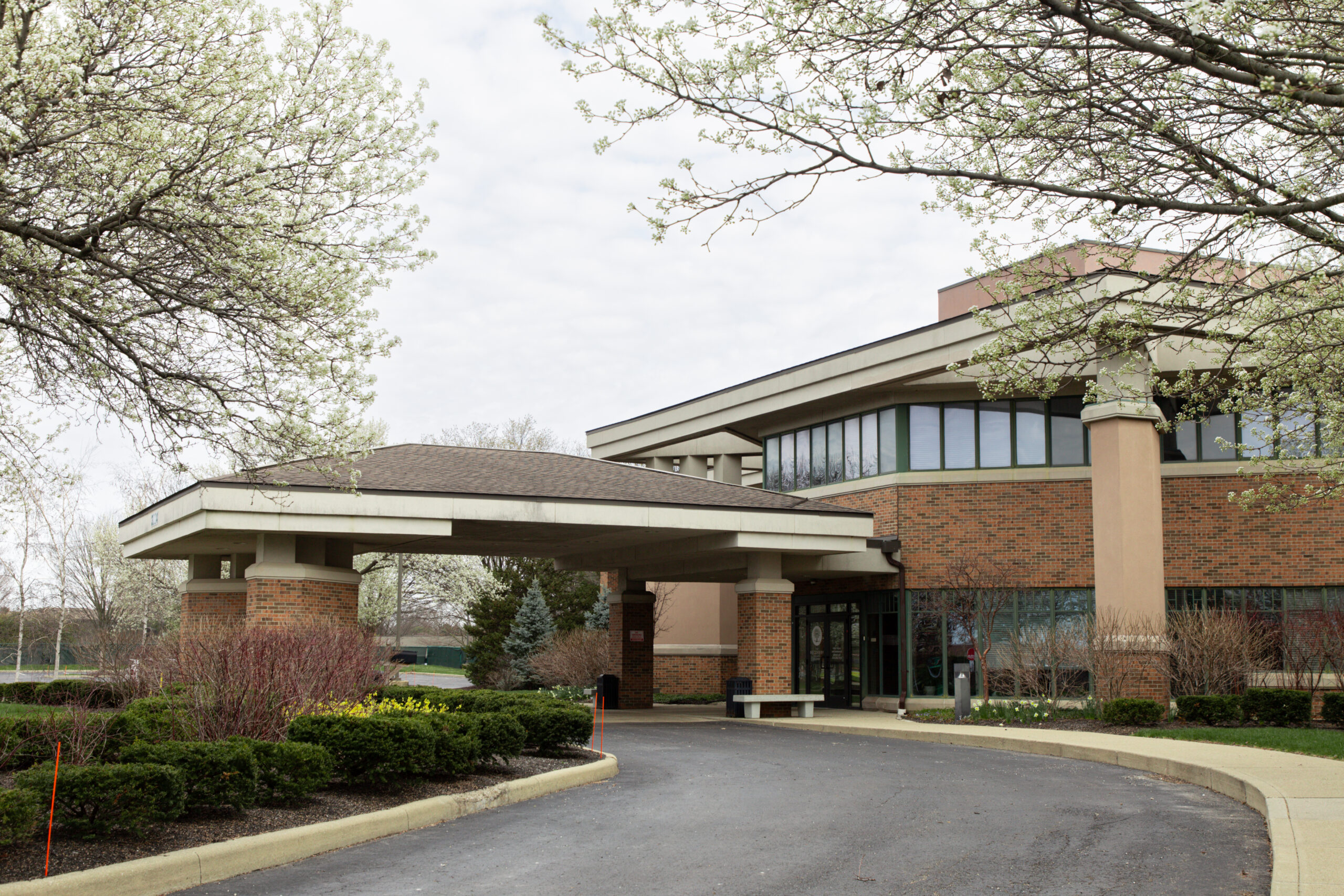Key Takeaways
- Librium is known generically as chlordiazepoxide.
- Chlordiazepoxide is a benzodiazepine used for anxiety and alcohol withdrawal that has a high potential for addiction.
- It works by enhancing the effect of the neurotransmitter GABA, which causes relaxation.
- Chronic use can lead to tolerance, dependence, and addiction.
- Physical symptoms of Librium addiction include drowsiness, slurred speech, and poor coordination
- Psychological symptoms of Librium addiction include obsessive thoughts and loss of interest in activities.
- Long-term use can lead to severe health risks such as overdose, especially when combined with other drugs.
- Social and legal repercussions include strained relationships, job loss, and legal troubles due to misuse.
- Comprehensive treatment involves medically supervised detox, therapy, and support groups.
- Therapeutic interventions like cognitive behavioral therapy and family involvement are crucial for recovery.
- Support groups and aftercare programs play a vital role in maintaining long-term sobriety.
Understanding Librium: Uses and Potential for Addiction
Librium, known generically as chlordiazepoxide, is a medication that falls under the class of benzodiazepines.
Chlordiazepoxide is commonly prescribed for its sedative, hypnotic, anxiolytic, and muscle relaxant properties. It is primarily used in the treatment of anxiety disorders, alcohol withdrawal symptoms, and nervousness before operations. Librium creates a calming effect by modulating the neurotransmitter GABA in the central nervous system.
Despite its therapeutic benefits, Librium is classified as a Schedule IV controlled substance by the DEA. This indicates an accepted medical use but also a potential for abuse and dependence. The UK’s classification of Librium as a Class C drug under the Misuse of Drugs Act further underscores its potential for misuse. Nevertheless, it is considered less harmful than various other substances.
Common side effects associated with Librium include confusion, sedation, and motor skill impairment. Unfortunately, older and debilitated people are particularly susceptible to these side effects.
Moreover, Librium has a significant interaction profile. It can increase overdose risks when combined with over 400 different drugs. The necessity for careful dosage adjustment is paramount to minimize the risk of adverse effects. It’s also important to avoid the development of addiction, which is characterized by cravings and a dependency on the drug to feel normal.
Understanding the dual nature of Librium — its medical benefits and its potential for addiction — is crucial for healthcare providers and patients alike. It is essential to balance its use in treating specific conditions with the vigilance required to prevent dependency and misuse.
The Neurophysiological Mechanisms of Librium Addiction
Librium’s calming effect on the central nervous system also holds the potential for addiction.
The drug works by enhancing the impact of the neurotransmitter gamma-aminobutyric acid, or GABA. GABA is responsible for reducing neuronal excitability throughout the nervous system. When Librium is consumed, it binds to GABA receptors in the brain, increasing the efficiency of GABA and thus causing a significant depressant effect. This leads to feelings of relaxation and sedation, which can be psychologically reinforcing.
The mechanism behind Librium addiction involves the drug’s impact on the brain’s reward pathways. Chronic use of Librium can lead to changes in the brain’s reward system, particularly in areas with many dopamine neurons. These adaptations can lower the brain’s natural ability to produce feelings of pleasure without the drug’s presence. In turn, this causes dependency.
The more a person uses Librium, the more their brain becomes accustomed to its effects. Unfortunately, this leads to tolerance and the need for higher doses to achieve the same effect. This cycle can escalate into addiction as the individual continues to use the drug to avoid withdrawal symptoms and to attempt to regain the initial pleasurable sensations.
Librium’s Interaction with Brain Neurotransmitters
Librium targets neurotransmitters in the brain. Its primary mechanism of action is the enhancement of GABA activity. GABA serves as an inhibitory neurotransmitter, which means it reduces neuronal excitability throughout the nervous system. When Librium increases GABA activity, it leads to a decrease in the overall activity of neurons. In turn, this causes the calming, anti-anxiety effects for which the drug is prescribed.
By binding to GABA receptors, Librium increases the effect of GABA, causing hyperpolarization of neurons. This hyperpolarization makes it more difficult for neurons to fire. Therefore, it dampens the signals that contribute to anxiety and agitation.
As a result, Librium is commonly used to treat conditions such as anxiety disorders and symptoms of alcohol withdrawal. The drug’s ability to slow down CNS activity also accounts for its sedative and hypnotic properties.
However, the alteration of GABA activity by Librium can lead to tolerance and dependence as the brain adapts to the drug’s presence. Over time, the brain may require higher doses to achieve the same therapeutic effect, setting the stage for addiction.
The Role of GABA in Librium Addiction
Librium is known to enhance the effects of GABA, the primary inhibitory neurotransmitter in the brain.
GABA’s role in the central nervous system is to reduce neuronal excitability, which in turn promotes a calming effect. This mechanism is central to Librium’s therapeutic use in managing anxiety and withdrawal symptoms. It helps to dampen the overactivity of neurons that can lead to these conditions.
However, the interaction between Librium and GABA also underpins the drug’s addictive potential. When Librium increases GABA activity, it can lead to a dysregulation of neurotransmission and an imbalance in brain circuitry. This can contribute to the development of addiction by altering the brain’s reward and reinforcement systems, making the user increasingly dependent on the drug to maintain normal brain function and emotional state.
Long-term use of Librium can cause the brain to adapt to the heightened presence of GABA, leading to tolerance and dependence. As the brain becomes accustomed to the drug’s effects, it may produce less GABA naturally or reduce the sensitivity of GABA receptors. This adaptation can drive the cycle of addiction, where the user needs higher doses to achieve the same calming effects and may experience withdrawal symptoms when not taking the drug.
Research from highly credible sources, such as PubMed Central and Oxford Academic, has highlighted the complex role GABA plays in the risk of Librium addiction, emphasizing the importance of understanding this neurotransmitter’s function in the context of substance abuse and dependence.
Identifying Signs and Symptoms of Librium Addiction
Librium can lead to addiction characterized by a range of physical, psychological, and behavioral symptoms. Recognizing these signs is critical for early intervention and treatment.
Physical symptoms often include drowsiness, slurred speech, decreased reaction time, and poor coordination. Psychological signs may manifest as obsessive thoughts about Librium, a loss of interest in previously enjoyable activities, and an inability to stop using despite the knowledge of harm.
Behaviorally, individuals may exhibit increased secrecy, spend more time obtaining and using Librium, and continue its use despite facing negative consequences. Physical dependence is indicated by withdrawal symptoms like tremors, anxiety, and insomnia when the drug is not taken.
It’s important to note that combining Librium with other substances greatly increases the risk of severe side effects. Unfortunately, these can include respiratory depression and overdose, which can be fatal.
For those prescribed Librium, it is essential to use the medication under strict medical supervision to minimize the risk of addiction. If any signs of addiction are noticed, it’s important to consult a healthcare professional immediately.
Physical Indicators of Librium Addiction
Librium addiction is characterized by a range of physical symptoms. Recognizing these signs is crucial for early intervention and treatment.
Physical symptoms of Librium addiction may include:
- Drowsiness and fatigue
- Slurred speech
- Reduced heart rate and lowered blood pressure
- Physical dependence, indicated by withdrawal symptoms
- Compulsive use despite negative consequences
- Obsessive thoughts and behaviors related to drug use
- Loss of interest in previously enjoyed activities
It’s important to note that these symptoms can vary based on the dosage and duration of use.
If any of these symptoms are observed, especially in the context of increased tolerance and withdrawal, it may indicate a Librium addiction. Effectively addressing Librium addiction often requires medical intervention.
Psychological and Behavioral Symptoms of Librium Addiction
Librium addiction can manifest through various psychological and behavioral symptoms. Unfortunately, these symptoms can negatively impact an individual’s daily life.
Obsessive thoughts and behaviors centered around obtaining and using Librium are common indicators of addiction. A marked loss of interest in previously enjoyed activities and persistent use despite awareness of the drug’s harmful effects also suggest addiction.
Behavioral changes may include neglecting responsibilities, withdrawing from family and social circles, and potentially encountering legal and financial issues as a result of dependency.
Psychological symptoms can be paradoxical. Librium, while intended to reduce anxiety, may lead to heightened anxiety levels when abused.
Other psychological signs to be aware of include:
- Mood swings
- Depression
- Increased tolerance, leading to higher doses for the same effect
These symptoms are further complicated when Librium is used in conjunction with alcohol or opioids. This increases the risk of overdose and severe side effects such as respiratory depression and seizures.
Recognizing these signs is crucial for seeking timely treatment.
The Risks and Consequences of Librium Addiction
Librium has a high potential for addiction and abuse. Misuse of Librium can lead to severe health risks, social implications, and legal repercussions.
Health risks include increased tolerance, dependence, and the risk of fatal overdose. Librium is particularly dangerous when combined with other substances like alcohol or opioids. Overdose symptoms may include life-threatening seizures, which require immediate medical intervention.
From a social standpoint, Librium addiction may result in neglect of responsibilities. Additionally, users may engage in risky behaviors, such as driving under the influence. Such behaviors endanger the user and others.
In turn, people with Librium addiction may experience strained relationships, job loss, and significant legal troubles.
Statistically, the misuse of benzodiazepines like Librium is concerning. Roughly 2.1% of Americans misuse benzos, and 17.1% of Americans who have used benzos misuse them. The consequences of such widespread misuse are stark.
Recognizing the signs of addiction is critical for seeking timely treatment.
The Health Risks of Long-Term Librium Use
Librium carries significant risks when used long-term or misused.
Prolonged Librium use can lead to physical dependence and tolerance. Users require higher doses to achieve the same therapeutic effects. In turn, this heightens the risk of addiction and withdrawal symptoms.
The health risks associated with Librium addiction are manifold, and include the following:
- Increased risk of overdose, which can be fatal.
- This is especially important, as Librium interacts with hundreds of other drugs.
- Physical and psychological symptoms, which can impair daily functioning and quality of life.
- Exacerbation of mental health issues due to the drug’s impact on the brain’s neurotransmitters.
- Chronic use may result in fluid retention (edema), skin problems, and menstrual irregularities.
- There is a potential for developing a secondary addiction when using Librium to manage withdrawal symptoms from other substances, such as alcohol.
Understanding these risks is vital for those prescribed Librium. Misuse can quickly spiral into addiction, leading to a cycle of withdrawal, overdose, and even death.
Medical intervention and comprehensive treatment programs are essential for individuals struggling with Librium addiction.
The Social and Legal Repercussions of Librium Addiction
Librium can lead to addiction with serious social and legal consequences.
Misuse of Librium may look like taking it in higher doses or without a prescription. This can disrupt personal relationships, leading to social isolation. Additionally, individuals may engage in “doctor shopping” to obtain multiple prescriptions. They may also resort to forging prescriptions. Both of these actions are criminal offenses.
Research indicates that substance abuse, including benzodiazepines like Librium, is associated with an increased risk of committing criminal acts, further entangling individuals in the criminal justice system.
Moreover, addiction can impair one’s ability to maintain employment, leading to financial instability and affecting social status. The stigma associated with addiction can worsen social withdrawal and hinder recovery efforts.
In severe cases, addiction may lead to child custody issues or the dissolution of marriages.
From a legal perspective, the misuse of Librium can lead to serious criminal charges, including:
- Illegal possession
- Distribution
- Driving under the influence
The consequences of these charges include incarceration, fines, and a criminal record that can affect future opportunities.
It is crucial for individuals struggling with Librium addiction to seek professional treatment. Treatment options often include medically supervised detox, counseling, and support groups. These can help individuals rebuild their lives and avoid the detrimental effects of addiction.
Comprehensive Treatment Approaches for Librium Addiction
Addressing Librium addiction requires a multifaceted approach tailored to the individual’s specific needs.
Treatment typically begins with medically supervised detoxification to manage withdrawal symptoms safely.
Following detox, individuals often engage in comprehensive addiction treatment programs. These may include a combination of evidence-based therapies such as:
- Cognitive behavioral therapy
- Group counseling
- Individual therapy
- Participation in support groups
These interventions are designed to help individuals understand the underlying causes of their addiction, develop coping strategies to prevent relapse, and build a supportive network for long-term recovery.
The goal of treatment is to facilitate sobriety while addressing psychological, social, and behavioral aspects of addiction.
Since Librium is often prescribed to treat conditions like anxiety and insomnia, treatment plans may also involve finding alternative, non-addictive medications or therapies to manage these underlying issues.
For those who have experienced an overdose or have a severe addiction, specialized rehabilitation facilities offer structured programs that provide the necessary medical and therapeutic support.
It’s crucial for individuals struggling with Librium addiction to seek help from reputable substance abuse treatment centers that can offer personalized care and a pathway to recovery.
Detoxification and Medical Intervention for Librium Addiction
Detoxification is a critical initial step in treating Librium addiction. It should be medically supervised.
This intervention is designed to help individuals safely discontinue Librium use while managing withdrawal symptoms. Remember, these symptoms can range from uncomfortable to life-threatening. Medical detoxification ensures that the body gradually adjusts to lower levels of Librium, mitigating the risks associated with abrupt cessation.
During detox, healthcare professionals may administer medications to alleviate withdrawal symptoms and prevent complications. The goal of this medical intervention is to stabilize the patient’s condition. In turn, this paves the way for further addiction treatments, such as therapy and counseling. It’s essential for the detox process to occur in a controlled environment where the patient can receive round-the-clock care and support.
Given the potential severity of benzodiazepine withdrawal symptoms, the detoxification process must be approached with caution. Symptoms can be fatal. Therefore, detox should never be attempted alone or without professional guidance. The controlled reduction of Librium, along with the use of adjunct medications, helps to ensure a safer detox experience, minimizing the risk of severe withdrawal effects and setting the stage for successful recovery.
Therapeutic Interventions in Librium Addiction Recovery
Therapy and counseling are pivotal in the recovery process from Librium addiction. They provide a structured environment for individuals to develop coping strategies and address the underlying issues of their addiction.
Cognitive behavioral therapy is commonly used. It helps patients to recognize and change negative thought patterns and behaviors associated with substance abuse. Additionally, therapy sessions can offer a safe space for individuals to explore their emotions and experiences, contributing to emotional healing.
Family involvement is also a significant aspect of therapy for Librium addiction. The community reinforcement and family training (CRAFT) approach involves family members in the recovery process. It teaches them how to support their loved one’s sobriety while minimizing behaviors that might unintentionally reinforce drug use. This collaborative effort can make treatment more effective. Additionally, it can also improve the dynamics within the family unit.
Group therapy sessions are another cornerstone of addiction treatment. They provide peer support and allow individuals to share experiences with others facing similar challenges. This communal aspect of recovery can foster a sense of belonging and accountability, which is crucial for long-term sobriety.
Ultimately, therapy and counseling are essential components of a comprehensive treatment plan. Ideally, they empower individuals with the tools and support needed to overcome Librium addiction and maintain a drug-free lifestyle.
The Crucial Role of Support Groups and Aftercare in Librium Addiction Recovery
Support groups and aftercare programs are vital components in the journey towards recovery from Librium addiction.
These resources provide individuals with a supportive community and ongoing assistance. Both things are essential for maintaining long-term sobriety. Participating in support groups, such as 12-step programs or group therapy sessions, offers individuals a sense of belonging and understanding. It creates a space where those in recovery can share their experiences, discuss challenges, and celebrate achievements. In turn, this reinforces their commitment to sobriety.
Aftercare planning is also a critical aspect of the recovery process. Once the initial detoxification is complete, individuals should engage in aftercare activities that promote sustained recovery. These may include continued therapy, regular attendance at support group meetings, and access to addiction specialists and mental health professionals. Aftercare plans are tailored to meet the unique needs of each individual, ensuring that they have the necessary tools and support to prevent relapse and continue on their path to recovery.
It is important to recognize that recovery from Librium addiction is an ongoing process that extends beyond initial treatment. Support groups and aftercare programs serve as a safety net, providing the necessary support to navigate the complexities of life post-addiction. By fostering a supportive environment, these programs play a crucial role in helping individuals build resilience, develop healthier coping mechanisms, and integrate into a community that values and supports their recovery efforts.
Drug, Alcohol, and Mental Health Treatment at The Recovery Village
At The Recovery Village Rehab Centers, we take the extra steps to treat your addiction or mental health needs by offering a full continuum of care. From medical detox to rehab to aftercare, we are focused on supporting your recovery every step of the way.
Our representatives can answer your questions and guide you toward treatment in your area. Your call will be confidential, and you don’t have to commit to a program to learn more about treatment options. Call today and find out how we can help you towards a healthier, happier future.















